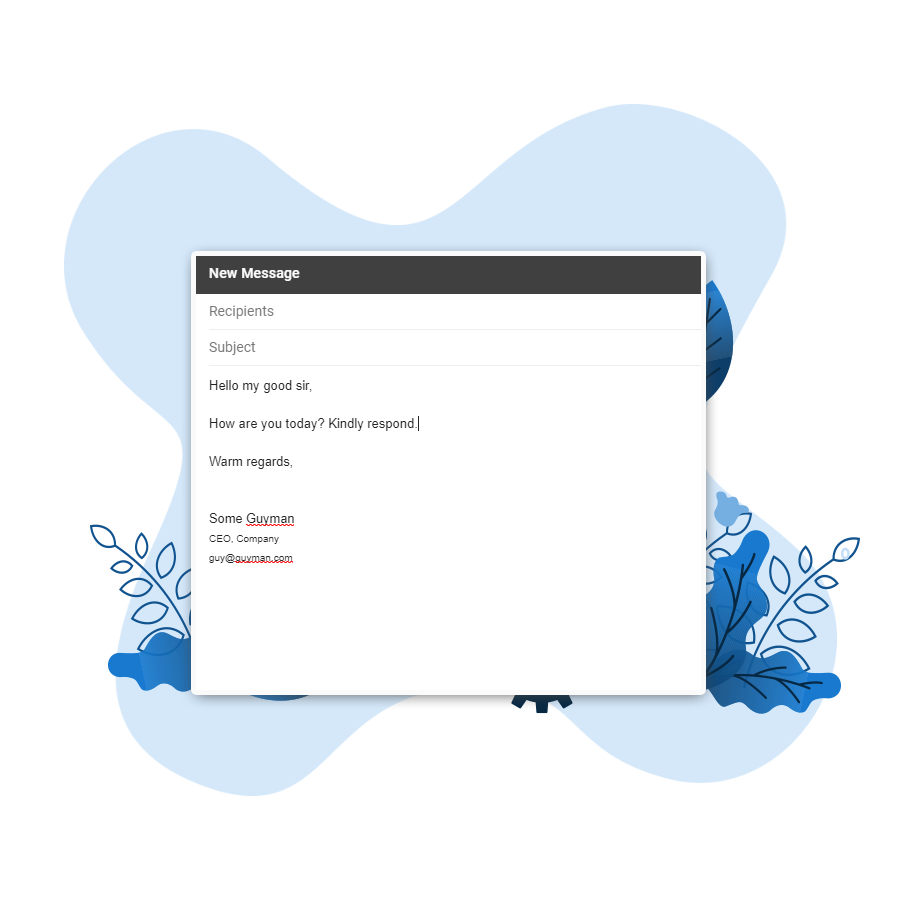How to write a good email.

Focus on the content.
The actual message of your email is most important. What point are you getting across? What key information are you trying to share? You can dress up a message all you want, but if your main point is unclear, then you have simply wasted your time and your readers' time. Focus on what you're actually saying, before the fluff.
In addition to the content, consider the structure and organization of your email. Use clear and concise language to convey your message effectively. Break down complex information into bullet points or paragraphs to enhance readability. Consider the recipient's perspective and provide any necessary background or context. By focusing on the content and presenting it in a logical and coherent manner, you can ensure that your email is informative and easy to understand.
Check your greeting.
Make sure to address people the way they want to be addressed. If someone signs their email as "Chris", you should reply "Dear Chris". If they sign with "Dr. Nelson", you should reply "Dear Dr. Nelson,"
Try to avoid generic greetings, especially ones that don't sound like a real person. You may write "Good afternoon!" as a greeting, but a native English speaker is unlikely to write "Dear kind sirs/madams:"
Another important aspect of writing a good email is maintaining a professional and courteous tone. Choose your words carefully and use polite language throughout your email. Be mindful of your grammar, spelling, and punctuation to ensure clarity and professionalism. Avoid using slang, abbreviations, or excessive exclamation marks that may detract from the professionalism of your email. By paying attention to the details of your language and tone, you can create a positive impression and build rapport with your recipients.


Your email greeting should sound like you really care about the person you are emailing with.
Furthermore, personalization goes beyond the greeting. Take the time to understand your recipients' preferences, interests, and concerns. Address their specific needs and tailor your email accordingly. Avoid generic or mass emails that lack relevance to the individual. By demonstrating genuine care and understanding, you can establish stronger connections and foster more meaningful communication through your emails.

Check your signature.
You shouldn't be telling someone "Happy Holidays" in your signature when it's already January. Make sure your email footer is up to date. Nothing can kill a company's professional look than an out of date signature.
You should consider making your signature unique. Pick a final greeting that's more than just "Sincerely" - although many people have started to do the same, and it starts to appear disingenuous. What's better is a signature that matches your brand!
If you sell surfboards, "Surfs up dude," is a great end greeting. Think of what might fit your brand and show it off!
Apart from the email body, pay attention to your email signature. Ensure that your signature includes relevant and up-to-date contact information such as your name, position, company, and phone number. Consider adding links to your social media profiles or website to provide additional avenues for engagement. Use consistent branding elements, such as your company logo or color scheme, to reinforce your professional image. By refining your email signature, you can leave a lasting impression and make it easier for recipients to connect with you.
Lastly, don't underestimate the power of a thoughtful closing. Instead of defaulting to the generic "Sincerely" or "Best regards," consider using a closing that aligns with your brand personality. Whether it's a playful phrase, a motivational quote, or a personalized sign-off, choose a closing that leaves a positive and memorable impression. This final touch adds a touch of personality to your email and reinforces your brand identity.

